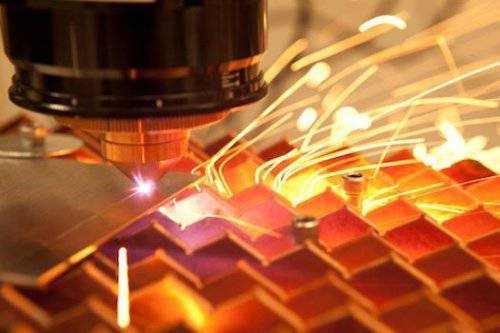The new semiconductor laser can cut, weld metal or be used as a weapon.
 It can be said that modern lasers, despite their prospects and capabilities, are laboratory equipment used by scientists. Of course, there are industrial lasers, the military all the time trying to develop a laser weapon. But, as it was before, it still remains today, the work of high-power lasers needs to comply with a number of conditions, among which are the availability of a powerful source of energy, special environmental conditions, expensive periodic maintenance, trained qualified personnel, etc. Researchers from the Lincoln Laboratory at the Massachusetts Institute of Technology managed to break through the above limitations, creating an LED laser system that is slightly larger and more complex than a conventional laser pointer, but is superior in brightness and power to all its ancestors.
It can be said that modern lasers, despite their prospects and capabilities, are laboratory equipment used by scientists. Of course, there are industrial lasers, the military all the time trying to develop a laser weapon. But, as it was before, it still remains today, the work of high-power lasers needs to comply with a number of conditions, among which are the availability of a powerful source of energy, special environmental conditions, expensive periodic maintenance, trained qualified personnel, etc. Researchers from the Lincoln Laboratory at the Massachusetts Institute of Technology managed to break through the above limitations, creating an LED laser system that is slightly larger and more complex than a conventional laser pointer, but is superior in brightness and power to all its ancestors.The TeraDiode laser system is based on the use of semiconductor lasers that convert electricity directly into light without the participation of gas and chemical intermediaries, which is an undoubted advantage in terms of simplicity and security. With the help of a special optical system, light rays from a certain number of semiconductor lasers are combined into one strong beam powerful enough for industrial cutting and welding of metal, or for hitting enemy targets. Weapon lasers are quite cumbersome systems, which, in most cases, are now in the form of prototypes being tested.TeraDiode system, which has an excellent ratio of laser power to the size of the system itself, can be a completely new qualitative step in the development of laser weapons.
TeraDiode laser systems are small enough and can be installed on ships, tanks and cars. But, despite their modest dimensions, the power of their beam is quite enough to shoot down unmanned aerial vehicles, approaching artillery shells, bombs or grenades.
TeraDiode systems installed on airplanes can deflect from the target and even shoot down approaching anti-aircraft missiles and air-to-air missiles. First experienced defensive aviation TeraDiode-based systems will undergo first tests in a year, and full-scale deployment of such systems may become possible in three to five years.
Information